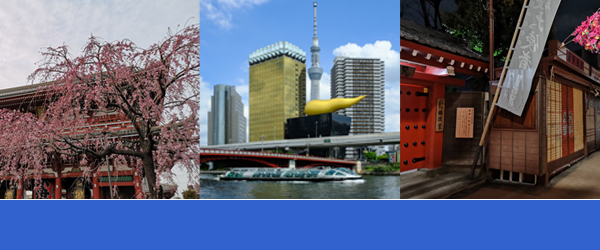Recently, the world mourned the loss of a prominent figure in the world of manga and anime, Toriyama Akira. With his creative genius, Toriyama left a lasting legacy in the industry, influencing entire generations of artists and enthusiasts alike.
The manga and anime, two forms of artistic expression that have captured hearts worldwide, are fundamental elements of Japanese culture. Their unique narrative and distinctive visual style have captivated audiences of all ages and cultures, becoming global phenomena that transcend geographical borders.
Manga and anime are not only forms of entertainment but also powerful means of storytelling, conveying emotions, and exploring universal themes. From their humble beginnings to their current status as respected and admired art forms worldwide, manga and anime continue to evolve and surprise their audience.
In this article, I want to I want to pay a small tribute to Toriyama sensei through the history of the manga. we will explore the fascinating world of Japanese manga and anime and their relevance to foreign visitors exploring the wonders of Japan. From their history to their cultural influence, these forms of expression play an integral role in the experience of those seeking to immerse themselves in the rich and diverse Japanese culture.
The first glimpse of manga aesthetics can be found in the 13th century in the work Chōjugiga, a series of satirical drawings attributed to Toba no Sōjō. During the Edo period (1603-1868), the ukiyo-e artistic movement, which combined graphic representations with narratives, laid the aesthetic and narrative foundations that would influence manga.
The term “manga” (漫画) was coined during the Meiji Era (1868-1912), a period of cultural and economic opening in Japan under the rule of Emperor Mutsuhito. The word consists of two kanji: “man” (漫), which means “informal” or “exaggerated”, and “ga” (画), which means “drawing” or “picture”. Thus, “manga” is literally translated as “whimsical drawings or doodles”, arising from the fusion between the graphic style of traditional Japanese painting and Western comics.
The painter Hokusai (famous for The Great Wave off Kanagawa) was crucial in popularizing the term “manga” by using it in the title of his book “Hokusai Manga”. In the early 20th century, Rakuten Kitazawa created what is considered the first modern manga, “Tagosaku to Mokube no Tokyo Kenbutsu” (1902), marking the beginning of the modern era of manga.

Tagosaku to Mokube no Tokyo Kenbutsu, the first manga

The Great Wave off Kanagawa, Katsushika Hokusai
In the 1920s and 1930s, manga became popular, primarily targeting children and young people. This period also saw the first attempts to export manga outside of Japan for a broader audience as generic entertainment.
After the Second World War, Japan entered a new era of reconstruction and transformation. Entertainment became a vital industry, offering escapism and distraction in times of post-war hardship. Resource shortages drove the demand for economical forms of entertainment, and competitors emerged in the manga industry.
Osamu Tezuka (like many people consider the manga&anime’s God) , a young medical student passionate about Western cartoons, revolutionized the manga industry with his first red book, “The New Treasure Island.” His cinematic approach, breaking down movements into multiple panels and using sound effects, attracted hundreds of thousands of readers.
Tezuka’s success led him to Tokyo magazines, especially Manga Shōnen (1947), the first children’s magazine dedicated exclusively to manga. There, Tezuka published “Astroboy” (the original title is 鉄腕アトム, Tetsuwan atom, Iron-Armed Atom) and established his unique style of epic narrative and genre diversification.

By the mid-1950s, Tezuka had become a central figure in the manga industry, inspiring a new generation of authors. However, there was also room for other artists, such as Machiko Hasegawa, creator of the comic strip “Sazae-san,” and Shigeru Sugiura, with a unique and distinctive graphic style.
As the industry evolved, magazines like Shōnen disappeared, and red books faced their decline. However, thanks to the legacy of Tezuka and other pioneers, the foundations of contemporary manga and anime industries had been laid.
Since the 1960s, anime began to gain popularity with subgenres such as giant robots (Mecha). Series like “Tetsujin 28-gō” marked the beginning, but it was in the 1970s when the genre took off with iconic productions like “Mazinger Z” and “Gundam,” pitting these behemoths against monsters like Godzilla.
It must be said that during that time, there was already a significant influence of manga abroad, but no one anticipated what would come next. In the early 1990s, a new anime captivated children worldwide. It wasn’t just any anime; most kids in many countries eagerly awaited in front of the television to watch the new episode of that anime. Its name, Dragon Ball.

This manga and anime, created by Akira Toriyama in 1984, became a global phenomenon, attracting a wide audience with its unique blend of action, adventure, and comedy. The story of Son Goku and his friends on a quest for the legendary Dragon Balls captured the imagination of millions worldwide, establishing Dragon Ball as a cultural icon and leaving a lasting legacy in the manga and anime industry.

Such was the success of Dragon Ball that in some European countries, it even outsold American and domestic comics for several years. In Spain, Dragon Ball sold so many copies that it is considered the best-selling foreign-origin comic in history.
The influence of Dragon Ball is immeasurable, considered the beginning of modern shonen and a source of inspiration for many mangakas. Authors like Eiichiro Oda (One Piece), Masashi Kishimoto (Naruto), and Tite Kubo (Bleach) have often acknowledged that Dragon Ball was a direct influence on the creation of their own stories. Dragon Ball’s imaginative narrative and charismatic characters laid the groundwork for the development of the shonen genre and left a lasting legacy in the manga and anime industry.
Through his immortal artistry, the master of Japanese drawing left an indelible mark on the minds and hearts of countless children and adults, who still revel in the series that unfolded between 1984 and 1995, spanning 42 volumes. The vast universe of Dragon Ball not only revolutionized the entertainment industry but also crossed the borders of Japan, inundating the West with its magnificence, as evidenced by the 260 million copies sold worldwide.
Despite his masterful command in the world of manga and anime, Akira Toriyama also established his legacy in the realm of video games, breathing life into several unforgettable characters. The global impact of his work transcends language and culture barriers, evidenced by the multitude of people from the farthest corners of the planet who pay homage and applaud his efforts in creating a universe imbued with fundamental values such as friendship, family, strength, and the defense of our home, Earth.
“In honor of Toriyama Akira, may his spirit continue shining like a Kamehameha in the manga firmament. And yes, the Dragon Balls may not bring him back, but he’s surely drawing new worlds and characters in the Other World, perhaps even teaching some Saiyans some new tricks. Thank you for making my childhood happier, rest in peace”








